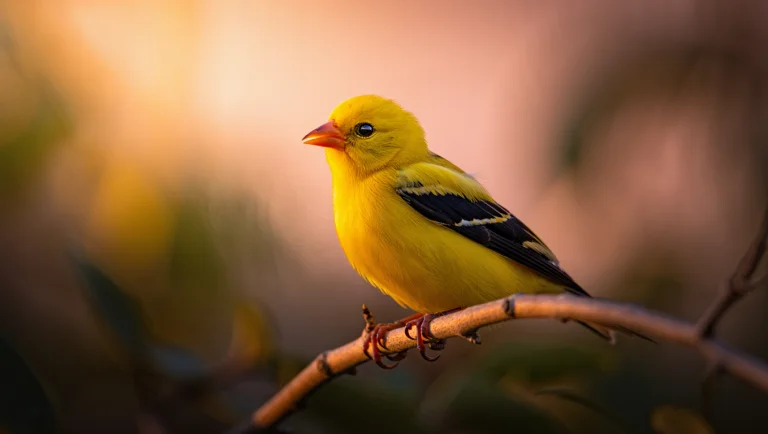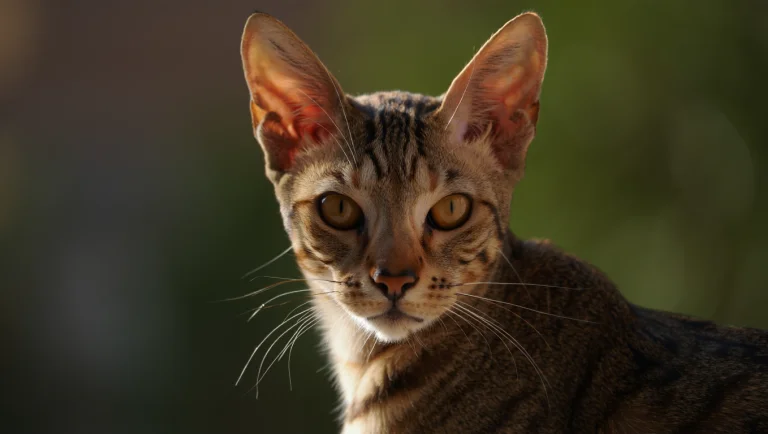Discover 7 fascinating facts about the Alabama state bird (the Yellowhammer) that schools never taught you, from its Civil War origins to its surprising ecological importance.

Table of Contents
When it comes to state symbols, birds often capture the imagination and represent the unique characteristics of their respective states. The Alabama state bird, officially known as the Northern Flicker but locally referred to as the “Yellowhammer,” holds a special place in Alabama’s history and culture. While you might have briefly learned about state symbols in elementary school, there’s much more to this vibrant woodpecker than meets the eye.
Alabama adopted the Yellowhammer as its official state bird in 1927, but the relationship between Alabama and this distinctive woodpecker dates back to the Civil War era. From its unique physical characteristics to its role in Alabama’s folklore, the Northern Flicker offers fascinating insights into the Heart of Dixie’s natural heritage and cultural identity.
In this comprehensive guide, we’ll dive deep into seven remarkable facts about the Alabama state bird that you likely didn’t learn during your school days. Whether you’re a bird enthusiast, history buff, or simply curious about Alabama’s natural symbols, these lesser-known details about the Yellowhammer will deepen your appreciation for this iconic state emblem.

The Yellowhammer Isn’t Just a Bird—It’s a Civil War Legacy
The connection between Alabama and the Yellowhammer runs deeper than most state-bird relationships, originating not from naturalists but from the battlefield.
The Origin of “Yellowhammer State”
During the Civil War, a company of Alabama soldiers marched to Hopkinsville, Kentucky, wearing brand new uniforms with bright yellow cloth on the sleeves, collar, and coattails. When they arrived, the Kentucky soldiers—already weather-worn and experienced—mockingly called them “Yellowhammers” because the bright yellow trim on their uniforms resembled the yellow feathers under the wings and tail of the Northern Flicker woodpecker.
From Mockery to Pride
What began as a taunt transformed into a symbol of state pride. The nickname stuck, and Alabama soldiers embraced the term, wearing it as a badge of honor. Following the war, “Yellowhammer” became closely associated with Alabama itself, ultimately leading to the Northern Flicker’s official designation as the state bird in 1927.
Dr. Martha Johnson, Alabama Historical Society curator, explains: “The Yellowhammer represents the resilience of Alabamians. Taking what was intended as ridicule and transforming it into a source of state pride exemplifies the Alabama spirit.”
It’s Not Actually Called the “Yellowhammer” in Ornithology
While Alabamians proudly refer to their state bird as the Yellowhammer, ornithologists and bird enthusiasts outside the state might not recognize this colloquial name.
Meet the Northern Flicker
The Alabama state bird’s scientific name is Colaptes auratus, commonly known as the Northern Flicker throughout North America. The term “Yellowhammer” specifically refers to the yellow-shafted subspecies of the Northern Flicker (Colaptes auratus auratus) that features bright yellow feathers under its wings and tail.
Regional Name Variations
Different regions have various names for this colorful woodpecker:
- Alabama: Yellowhammer
- Parts of the South: Yellow-shafted Flicker
- West Coast: Red-shafted Flicker (a different subspecies)
- Historical names: High-hole, Wake-up, Clape, and Yarrup (from its calls)
According to the Alabama Audubon Society, this diverse naming convention makes the Northern Flicker one of the most locally renamed birds in North America, with over 100 folk names recorded throughout its range.
The Yellowhammer Has Surprising Physical Abilities
Beyond its distinctive yellow feathers, the Northern Flicker possesses several remarkable physical characteristics that set it apart from other woodpeckers and birds in general.
The Incredible Tongue
One of the most fascinating features of the Alabama state bird is its extraordinarily long tongue. The Yellowhammer’s tongue can extend up to 2 inches beyond the tip of its bill—proportionally, that would be like a human having a 12-inch tongue!
This specialized tongue wraps around the back of the skull when retracted, and features a sticky tip with backward-facing barbs designed to efficiently extract ants and other insects from their tunnels and crevices.
Ground-Feeding Woodpecker
Unlike most woodpeckers that cling to tree trunks, the Northern Flicker spends up to 70% of its feeding time on the ground. Dr. William Peterson, ornithologist at Auburn University, notes: “The Yellowhammer represents an evolutionary divergence from typical woodpecker behavior. While it maintains woodpecker anatomy, it has adapted to primarily forage for ants and beetles on the ground, making it unique among its family.”
Powerful Pecking Force
When it does drum on trees, the Yellowhammer delivers impressive power. Studies have recorded Northern Flickers striking wood at forces up to 1,000 times the force of gravity (1,000 G’s), yet they avoid brain damage thanks to specialized skull structures that absorb shock—a feature that has inspired sports helmet designs.
Yellowhammers Have Unique Dietary Preferences
The Alabama state bird stands out from other woodpeckers not just in appearance but also in its eating habits.
The Ant Specialist
The Northern Flicker is North America’s most ant-specialized bird, with ants constituting up to 45% of its annual diet. A single Yellowhammer can consume thousands of ants in a day using its sticky, barbed tongue to collect them from underground colonies.
Research conducted by Alabama A&M University found that a breeding pair of Yellowhammers with nestlings might consume over 5,000 ants daily, making them valuable natural pest controllers in Alabama’s ecosystems.
Seasonal Diet Adaptations
When insects become scarce during winter months, Yellowhammers adapt by consuming:
- Berries and wild fruits (especially poison ivy berries)
- Seeds and nuts
- Occasional small vertebrates
The Grit Connection
Another unusual dietary habit involves the bird’s regular consumption of grit and small pebbles. These materials help the bird’s gizzard grind tough insect exoskeletons for digestion. Yellowhammers have been observed making regular visits to gravel paths and roadsides specifically to collect these grinding materials.
Their Courtship Rituals Are Elaborate Performances
The Yellowhammer engages in complex courtship behaviors that showcase both visual displays and vocal talents.
The “Dancing” Yellowhammer
During breeding season (typically February through June in Alabama), males perform what ornithologists call “butterfly flights”—spectacular aerial displays where they fly in a deeply undulating pattern while showcasing their yellow underwings.
Dr. Laura Simmons, wildlife biologist with the Alabama Department of Conservation and Natural Resources, describes it as “one of the most choreographed courtship displays among North American woodpeckers. The male essentially dances through the air, combining visual splendor with acoustic performance.”
Drumming Communications
Both male and female Yellowhammers communicate through drumming patterns—rapidly striking their bills against resonant surfaces such as hollow trees, metal roofs, and even rain gutters. Each bird produces a distinctive drumming pattern that serves as an acoustic signature.
Researchers have documented that Alabama Yellowhammers drum at an average rate of 25 strikes per second, creating patterns unique to individuals that may help with mate recognition and territory establishment.
Vocal Repertoire
The Northern Flicker possesses a diverse vocal repertoire including:
- A loud, piercing “klee-yer” call
- A softer “wicka-wicka-wicka” during courtship
- A distinctive “wik-wik-wik” alarm call
Sound analysis research from Jacksonville State University has revealed that individual Yellowhammers in Alabama have regionally specific dialects, with subtle variations in call patterns between birds in the Appalachian highlands versus those in coastal areas.
Yellowhammers Create Housing Opportunities for Dozens of Species
The Alabama state bird plays a crucial ecological role through its nest-building activities.
Nature’s Architects
Northern Flickers excavate new nesting cavities almost every year, typically in dead or diseased trees. Each cavity takes the pair 1-2 weeks to complete, requiring approximately 7,000 individual pecks and resulting in a chamber roughly 6-16 inches deep.
The Keystone Cavity Creator
After Yellowhammers finish using their nesting cavities, these structures become valuable real estate for dozens of other species. According to a landmark study by the Alabama Wildlife Federation, a single abandoned Yellowhammer cavity may serve as home to up to 12 different species over its usable lifespan.
Species benefiting from Yellowhammer cavities in Alabama include:
- Flying squirrels
- Eastern bluebirds
- Screech owls
- American kestrels
- Several bat species
- Native bees
- Tree frogs
Dr. James Wilson, ecology professor at Samford University, explains: “The Yellowhammer functions as what we call a ‘keystone species’ in Alabama’s forest ecosystems. By creating cavities at multiple forest heights, they engineer habitat diversity that supports dozens of secondary cavity nesters that cannot excavate their own homes.”
Cavity Conservation Concerns
The decline of standing dead trees (snags) due to urban development and forestry practices poses a significant threat to Yellowhammer populations across Alabama. Conservation efforts now focus on maintaining snags in managed forests and parks to ensure adequate nesting opportunities.
The Yellowhammer Inspired Alabama Cultural Touchstones
Beyond biology, the Alabama state bird has woven itself into the cultural fabric of the state in surprising ways.
The Yellowhammer Song
During the Spanish-American War, a popular marching song called “The Yellowhammer” emerged among Alabama regiments. The chorus, still taught in some Alabama schools, includes the line: “The Yellowhammer, the Yellowhammer, I’m a Yellowhammer, yes I am!”
Sports Traditions
The University of Alabama’s “Rammer Jammer” cheer, a controversial but enduring football tradition, contains references to the Yellowhammer and has roots dating back to the 1920s. The university’s yearbook was once titled “The Yellowhammer” before becoming “The Corolla.”
Currency Connection
In 2003, when Alabama released its state quarter as part of the U.S. Mint’s 50 State Quarters Program, the Yellowhammer was featured prominently in the design, alongside longleaf pine branches and magnolias.
Annual Celebrations
The town of Brundidge, Alabama hosts an annual Yellowhammer Festival each October, celebrating both the bird and its historical significance with birdwatching tours, historical reenactments, and community events that attract thousands of visitors.
Mayor Patricia Johnson of Brundidge notes: “The Yellowhammer Festival connects our community to Alabama’s natural heritage. It’s become a tradition that brings together conservationists, historians, and families to celebrate this unique symbol of our state.”
The Conservation Status of Alabama’s State Bird
While not currently endangered, the Northern Flicker faces population challenges worth understanding.
Population Trends
According to data from the North American Breeding Bird Survey, Northern Flicker populations have declined by approximately 49% since 1966. In Alabama specifically, monitoring programs have documented a 27% reduction in Yellowhammer sightings over the past two decades.
Threats to Yellowhammers
The primary threats to Alabama’s state bird include:
- Habitat loss due to urban development
- Removal of dead trees containing potential nesting sites
- Competition with invasive species like European starlings
- Pesticide use reducing ant populations
- Climate change altering breeding patterns
Conservation Initiatives
Several Alabama organizations lead conservation efforts focused on the Yellowhammer:
The Alabama Wildlife Center operates a rehabilitation program specifically for injured Northern Flickers, successfully returning dozens to the wild annually.
Alabama Audubon’s “Yellowhammer Project” encourages property owners to:
- Preserve standing dead trees where safe
- Install specially designed Yellowhammer nesting boxes
- Reduce pesticide use on lawns to maintain healthy ant populations
Dr. Elizabeth Cunningham, director of the Alabama Wildlife Center, shares: “We receive approximately 25-30 injured Yellowhammers annually, often from window strikes or cat attacks. Our rehabilitation success rate is encouraging, but prevention through habitat protection remains the most effective conservation strategy.”
FAQ About the Alabama State Bird
When did the Yellowhammer become Alabama’s state bird?
The Northern Flicker (Yellowhammer) was officially designated as Alabama’s state bird by the Alabama legislature in 1927. The legislation was championed by the Alabama Federation of Women’s Clubs, who advocated for official recognition of this historically significant bird.
Do Yellowhammers migrate from Alabama during winter?
Northern Flickers in the northern parts of their range are migratory, but most Alabama Yellowhammers are year-round residents. However, during harsh winters, some Alabama birds may make short-distance movements southward, while northern populations may temporarily increase Alabama’s Yellowhammer numbers.
How can I attract Yellowhammers to my Alabama yard?
To attract the Alabama state bird to your property:
- Maintain ant-friendly areas by limiting pesticide use
- Preserve dead trees (when safe) or install Yellowhammer-specific nest boxes
- Provide suet feeders in winter months
- Plant native berry-producing shrubs like dogwood and sumac
- Include a ground-level bird bath, as Yellowhammers prefer drinking and bathing at ground level
Are there any laws protecting the Alabama state bird?
Yes, Northern Flickers are protected under the Migratory Bird Treaty Act, making it illegal to hunt, capture, kill, or possess Yellowhammers or their eggs without proper federal permits. Additionally, as Alabama’s state bird, they receive special recognition in state conservation planning.
What’s the difference between a Yellowhammer and other woodpeckers in Alabama?
The Yellowhammer (Northern Flicker) differs from Alabama’s other woodpeckers by:
- Spending significant time feeding on the ground
- Having a brownish body with black spotting rather than the typical black and white pattern
- Displaying bright yellow underwings and tail feathers in flight
- Possessing a distinctive white rump patch visible when flying
- Having a more melodious call compared to the sharp notes of most woodpeckers
How long do Alabama Yellowhammers typically live?
In the wild, Northern Flickers typically live 5-6 years, though the oldest documented wild Yellowhammer reached 9 years and 2 months according to U.S. Fish and Wildlife Service banding records. In optimal conditions with proper care, captive rehabilitation specimens have reached 12 years.
For More Expert Pet Care Tips
For more expert pet care tips and product recommendations, visit BlithePet your trusted source for pet wellness.
Conclusion
The Alabama state bird represents far more than just another official state symbol—it embodies a unique intersection of natural history, cultural heritage, and ecological significance. From its Civil War connections to its remarkable physical adaptations, the Yellowhammer continues to captivate both Alabamians and bird enthusiasts worldwide.
As we’ve discovered through these seven fascinating facts, the Northern Flicker defies typical woodpecker stereotypes with its ground-feeding habits, extraordinary tongue, and crucial role in creating habitat for countless other species. Its distinctive yellow underwings that gave Alabama its “Yellowhammer State” nickname continue to inspire state pride more than 150 years after the Civil War.
Whether you’re an Alabama resident or simply appreciate learning about state symbols with rich historical contexts, the Yellowhammer offers a compelling example of how a single species can become thoroughly woven into a state’s identity.
Next time you spot a Northern Flicker with its distinctive bouncing flight and flashing yellow underwings, remember that you’re witnessing not just a remarkable bird, but a living piece of Alabama heritage—one that connects the past, present, and future of the Heart of Dixie.
Have a similar experience with your pet bird or a Yellowhammer sighting? Share it in the comments below!







